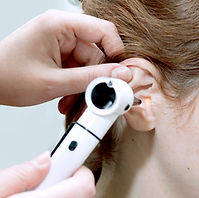
Sense of Hearing: Hearing Disorders

This lesson contains affiliate links to products I have used and personally recommend. At no cost to you, I make a commission for purchases made through the links or advertisements. These commissions help to pay for the costs of the site and enable it to remain free for anyone who wants to use it.
Objectives:
-
Students will be able to differentiate between the outer, middle, and inner ear.
-
Students will be able to describe disorders of the outer ear.
-
Students will be able to describe disorders of the middle ear
-
Students will be able to describe disorders of the inner ear.
-
Students will be able to explain how certain disorders affect hearing.
Questions that encompasses the objective:
Did you know that an earache isn’t the only illness you can get in your ear?
Prepare the Learner: Activating Prior Knowledge.
How will students prior knowledge be activated?
Warm up by asking students and have them share with a neighbor or partner:
-
Have you ever had an earache? What did it feel like?
-
Can you think of other problems you could have with your ears?
Common Core State Standards:
-
CCSS.ELA-LITERACY.SL.2.1
-
CCSS.ELA-LITERACY.SL.2.1 B
-
CCSS.ELA-LITERACY.SL.2.4
-
CCSS.ELA-LITERACY.W.2.2
-
CCSS.ELA-LITERACY.W.3.2
-
CCSS.ELA-LITERACY.W.3.2 B
-
CCSS.ELA-LITERACY.SL.3.1
-
CCSS.ELA-LITERACY.SL.3.4
Materials and Free Resources to Download for this Lesson:
Objects for Sound:
-
Video: “Preserving Your Hearing” (source: Sensimetrics on YouTube)
-
Crayons/Markers/Colored Pencils: green, pink, and blue
-
**If you have access to a real otoscope (via the school nurse) that should be used instead. Using realia helps the students to better understand the topic being taught, as well as helps to make the lesson more interesting for the students.**
Free Resources to Download for this Lesson:
Facilitation of Learning:
1. The class will begin with the teacher showing the YouTube clip “Preserving Your Hearing” (Sensimetrics on YouTube) After the video is shown, there should be a short discussion about the similarities and differences between each hearing loss (i.e., what information was missed when it was heard through moderate hearing loss? Severe hearing loss?)
Input:
What is the most important content in this lesson?
To reach the lesson’s objectives, the students need to understand:
-
The different parts of the ear: outer, middle, and inner
-
The different otic/ear disorders that can affect the outer, middle, and inner ear.
-
How the different otic/ ear disorders of the outer, middle, and inner ear can affect a person’s hearing.
How will the learning of this content be facilitated?
-
The class will begin with the teacher showing the YouTube clip “Preserving Your Hearing” (Sensimetrics on YouTube) After the video is shown, there should be a short discussion about the similarities and differences between each hearing loss (i.e., what information was missed when it was heard through moderate hearing loss? Severe hearing loss?)
-
After the video and the discussion, the teacher should review the parts of the ear. The teacher should review the most important parts of the ear including: the ear canal, the tympanic membrane (eardrum), the malleus, incus, and stapes, the cochlea, and the auditory nerve. Allow the students to use their diagrams from the lesson: “All About Hearing: How Do We Hear Loud and Soft Sounds?”
-
Once the teacher has finished explaining the parts of the ear, a discussion about how the ear is separated should begin. Each student should have a copy of the “Parts of the Ear” worksheet. The worksheet should also be projected in the front of the classroom or in a PowerPoint presentation. Each student should have three crayons, markers, or colored pencils: green (outer), pink (middle), and blue (inner). As each part is explained, the students should color it accordingly. The teacher should explain that the ear is separated into three parts: outer, middle, and inner. The outer ear is the only part of the ear that is visible without proper medical equipment. In order for the middle ear to be seen, a doctor (general physician) or audiologist (doctor specializing in the health and treatment of ears) must use an otoscope. An otoscope is a device with a light at one end and a magnifier and the other end. The doctor or audiologist points the light into the ear and looks through the magnifier. An otoscope is used to look into the ear canal and view the tympanic membrane (eardrum). When a doctor/audiologist looks into your ear, they can tell if your eardrum looks healthy. The inner ear is the part of the ear that is not visible. The inner part of the ear is located in your head and mainly controls your balance. The teacher should next begin a discussion about disorders and illnesses of the ear.
-
There are many disorders and illnesses that can affect all parts of the ear. A few examples for each part of the ear will be presented to the students. These same examples will be used in the “What is My Diagnosis?” activity.
Outer Ear Disorders:
-
Impacted Cerumen (Earwax): when a person has an excess amount (large amount) of earwax that it impacts how well they hear. A doctor/audiologist can see impacted cerumen by using an otoscope. Impacted cerumen can affect a person’s hearing.
-
Acute External Otitis (Swimmer’s Ear): red and swollen ear canal; also known as an “earache”. This disorder can be seen with and without an otoscope and usually affects a person’s hearing.
-
Microtia: abnormally small pinna (outer part of the ear). This disorder can be seen without an otoscope. Microtia usually affects a person’s hearing.
Middle Ear Disorders:
-
Otitis Media (Earache): red and swollen tympanic membrane (eardrum). A doctor/audiologist uses an otoscope to diagnosis this disorder.
-
Perforated Eardrum: a rupture (hole) in the eardrum. Depending on how bad the rupture is, hearing could be affected.
-
Eustachian Tube Dysfunction: when the Eustachian tubes do not open and close properly. Your ears will feel full and there will be a lot of pressure. Sounds will be muffled due to the increase amount of pressure in the Eustachian tube.
Inner Ear Disorders:
-
Meniere’s Disease: episodes of severe vertigo (dizziness), nausea and vomiting, and sometimes hearing loss.
-
Acoustic Neuroma: a tumor on the auditory canal that causes hearing loss, dizziness/ balance problems, and facial numbness and weakness.
-
Labyrinthitis: a disorder that causes dizziness/ balance problems, tinnitus (ringing of the ears), and hearing loss.
-
It is important that when the teacher is explaining the disorders to the students that they stress that outer and middle ear disorders cause pain and pressure, while inner ear disorder often affect balance. Disorders of all three parts affect hearing.
-
-
Once the ear disorders are explained, the students will break into groups of three or four. Each student will be given a “What is My Diagnosis?” worksheet. On desks throughout the room will be “Patient Complaint Cards”. Some cards will also contain pictures. The cards are scenarios of patients that are experiencing problems with their ears. The students will work together as a group and determine what the patient’s diagnosis is. The students will write the diagnosis and what part of the ear (outer, middle, inner) is affected on their “What is My Diagnosis?” worksheet. Allow the students about15 minutes to go around the room and “examine the patients”. Reconvene when 15 minutes is over and review the worksheet. The answers to the worksheet are:
-
Eva: acute external otitis
-
Bob: labyrinthitis
-
Lara: perforated eardrum
-
Chris: microtia
-
Sammy: Meniere’s disease
-
Burt: impacted cerumen
-
Shelly: acoustic neuroma
-
Barry: Eustachian tube dysfunction
-
Kira: otitis media
-
The final assessment will be for the students to answer the question: "Think about what we learned today in class. Do you think inner ear disorders are more dangerous than outer and middle ear disorders? Give at least one reason why and explain your thinking."
Time/Application
3-5 minutes
Guided Introduction
Review the class/ agenda with the students:
-
Introductory Activity (video)
-
Diagram of the Ear (review and the three parts)
-
Disorders of the Ear
-
Group Activity: “What is My Diagnosis?”
-
Discussion of Group Activity
-
Independent Assessment
10 minutes
Introductory Activity:
-
Have the students sit at their desks.
-
Show the students the video.
-
Once the video is over, review the different types of hearing loss.
15 minutes
Diagram of the Ear
-
Review the parts of the ear.
-
Give each student the “Parts of the Ear” worksheet. Ensure that the students have three markers/crayons/colored pencils: green, pink, and blue.
-
Project the diagram onto the board either through a projector or PowerPoint presentation.
-
Tell the students that as each part is explained, they color the outer part green, middle part pink, and inner part blue.
-
Explain the ear disorders.
15 minutes
Group Activity: “What is My Diagnosis?”
-
Give each student a “What is My Diagnosis? worksheet.
-
Instruct the students to break into groups of three or four.
-
Set up the “Patient Complaint Cards” on desks around the room. Have the students circulate around the room, read the cards, and answer the questions on their worksheet.
-
At the end of 15 minutes, have the students return to their desks and discuss their observations.
15 minutes
Closure/Independent Assessment:
-
As an independent assessment, the students will answer the question:
-
Think about what we learned today in class. Do you think inner ear disorders are more dangerous than outer and middle ear disorders? Give at least one reason why and explain your thinking.
Appropriate answers should include (but will vary):
-
Inner ear disorders are often accompanied with dizziness and balance problems. If you loose your balance you can fall and get hurt. The inner ear is closer to the brain than the outer and middle ears, sometimes these disorders can affect the nerves that lead to the brain
-
If there is additional time, discuss any additional questions the students may have.
Individualized Instruction/Scaffolding
English Language Learners will be supported in this lesson through data-based heterogeneous grouping, verbal and written repetition of new vocabulary words, and multiple representations of vocabulary words through printed images and video.














